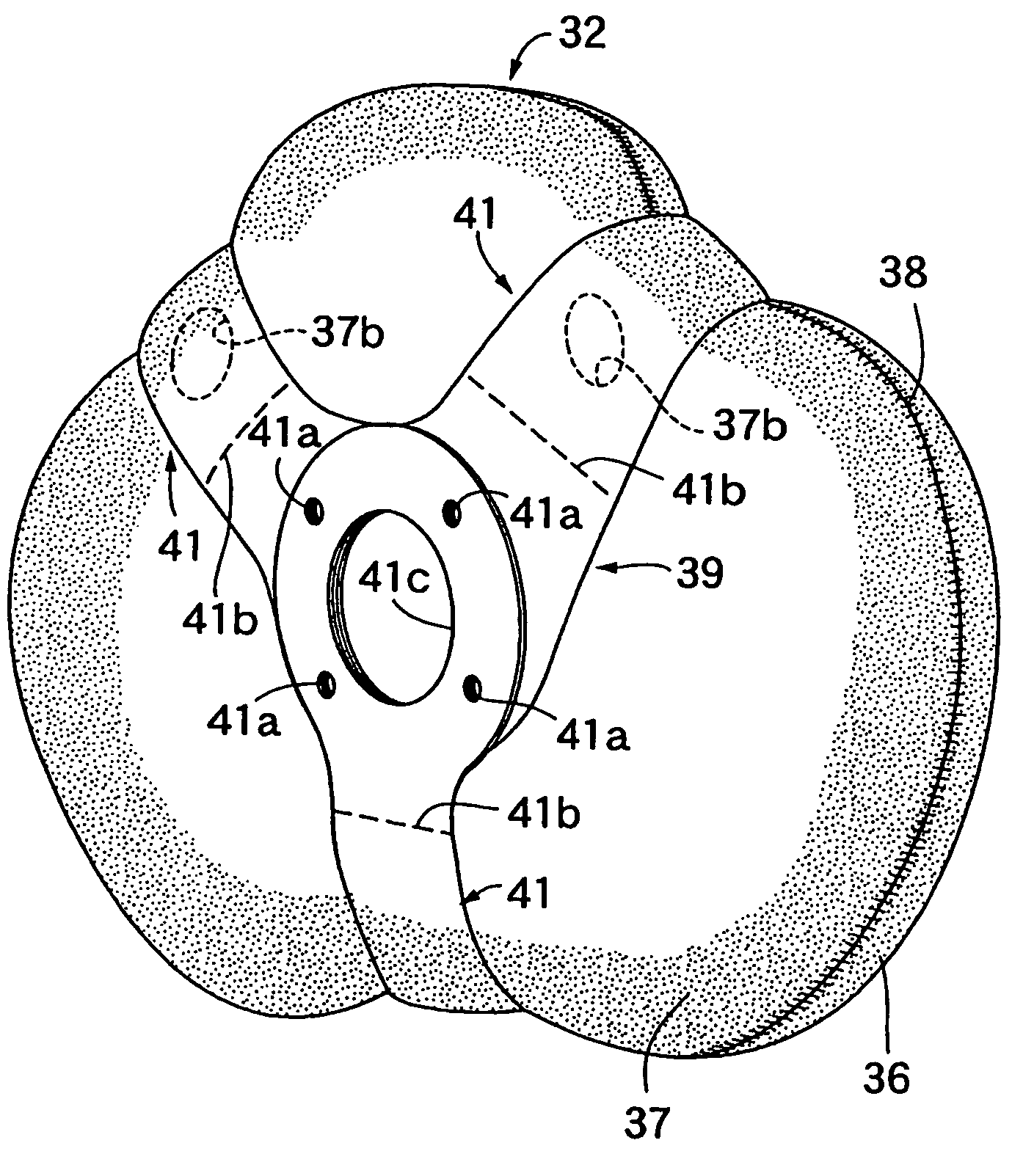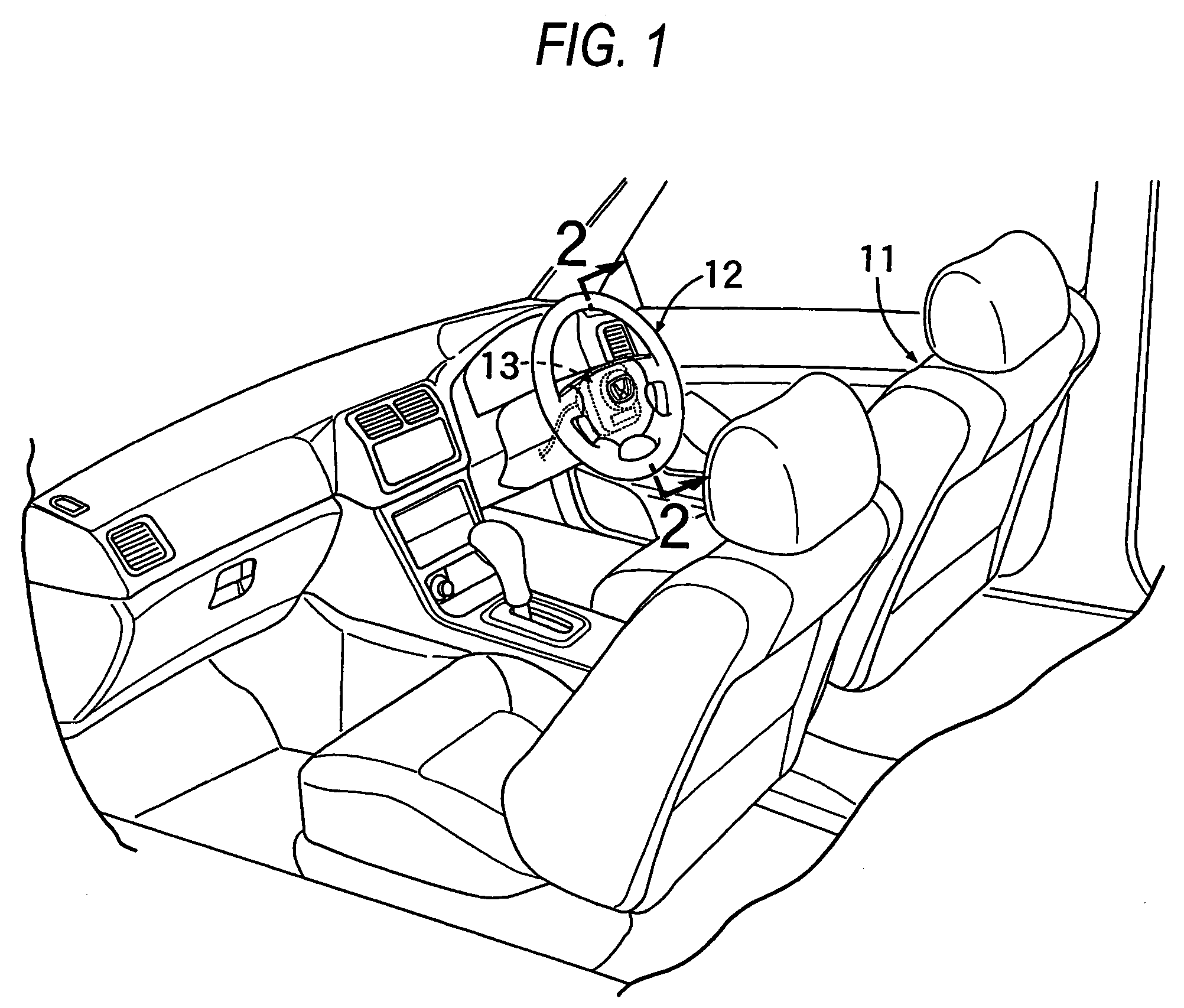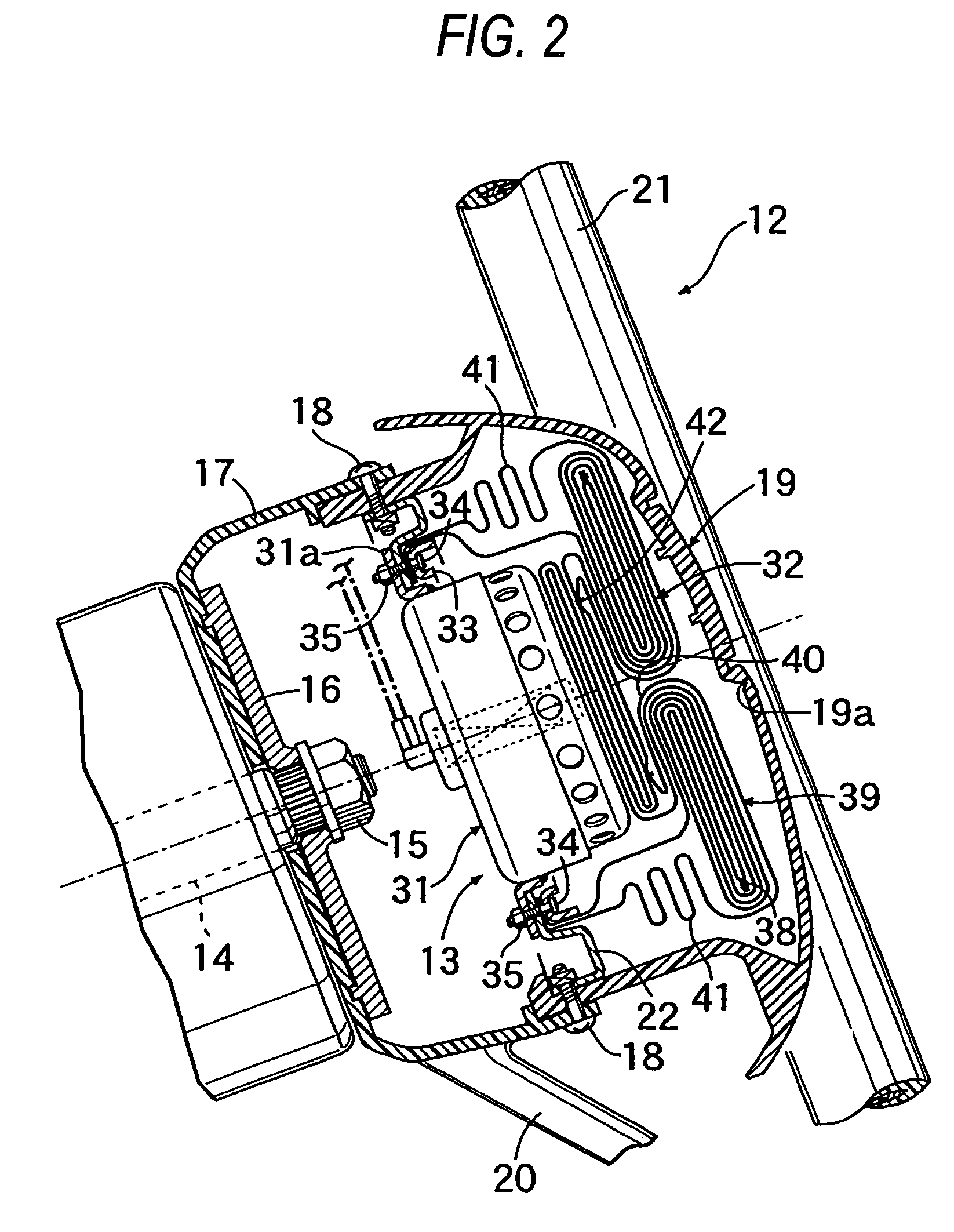Air bag system
- Summary
- Abstract
- Description
- Claims
- Application Information
AI Technical Summary
Benefits of technology
Problems solved by technology
Method used
Image
Examples
first embodiment
[0019]FIGS. 1 to 7 illustrates a first embodiment, in which FIG. 1 is a perspective view of a front part of a passenger compartment of an automobile, FIG. 2 is an enlarged cross-sectional view taken along the line 2—2 in FIG. 1, FIG. 3 an exploded perspective view of an air bag module, FIG. 4 is an exploded perspective view of an air bag, FIG. 5 is an explanatory drawing which explains the function of the air bag when it deploys (a view as seen in a direction indicated by an arrow 5 in FIG. 6), FIG. 6, is a view as seen in a direction indicated by an arrow 6 in FIG. 5, and FIG. 7 is an explanatory drawing explaining the function of the air bag when restricting fabrics are broken, which corresponds to FIG. 5.
[0020]As shown in FIG. 1, an air bag module 13 for a driver's seat 11 is accommodated in the interior: of a steering wheel 12 disposed in front of the driver's seat 11.
[0021]As shown in FIGS. 2 and 3, the steering wheel 12 includes a boss portion 16 fixed to a rear end of a steer...
second embodiment
[0030]Next, the invention will be described based on FIGS. 8 and 9.
[0031]While in the first embodiment the restricting member 39 has the four restricting fabrics 41 which extend radially at intervals of 90°, a restricting member 39 according to a second embodiment of the invention has three restricting fabrics 41 which extend radially at intervals of 120°. Circular openings 41c are formed in distal ends of the respective restricting fabrics 41 in such a manner as to be overlapped each other so as to be fixed to the fixing ring 33, and brittle portions 41b adapted to be broken in association with an increase in tension are formed in the vicinity of the openings 41c, respectively. Of the three restricting fabrics 41, the upper two restricting fabrics 41, 41 are disposed at positions where the vent holes 37b, 37b in the second base fabric 37 of the air bag 32 which is in a deployment process are closed.
[0032]Thus, a similar function and advantage to those attained in the first embodime...
PUM
 Login to View More
Login to View More Abstract
Description
Claims
Application Information
 Login to View More
Login to View More - Generate Ideas
- Intellectual Property
- Life Sciences
- Materials
- Tech Scout
- Unparalleled Data Quality
- Higher Quality Content
- 60% Fewer Hallucinations
Browse by: Latest US Patents, China's latest patents, Technical Efficacy Thesaurus, Application Domain, Technology Topic, Popular Technical Reports.
© 2025 PatSnap. All rights reserved.Legal|Privacy policy|Modern Slavery Act Transparency Statement|Sitemap|About US| Contact US: help@patsnap.com



